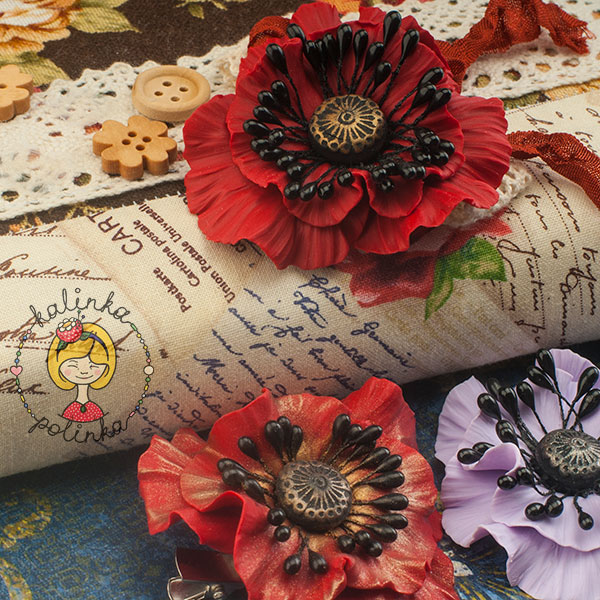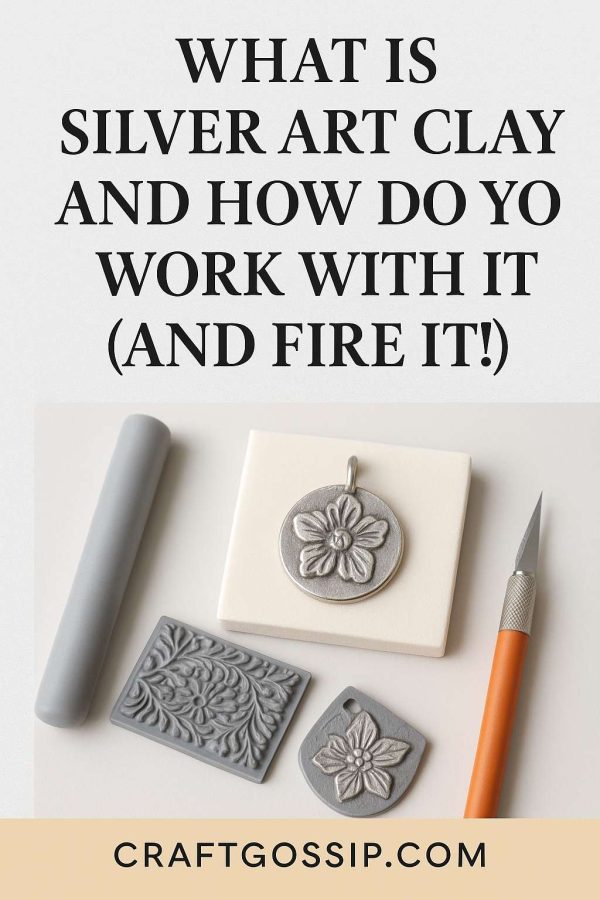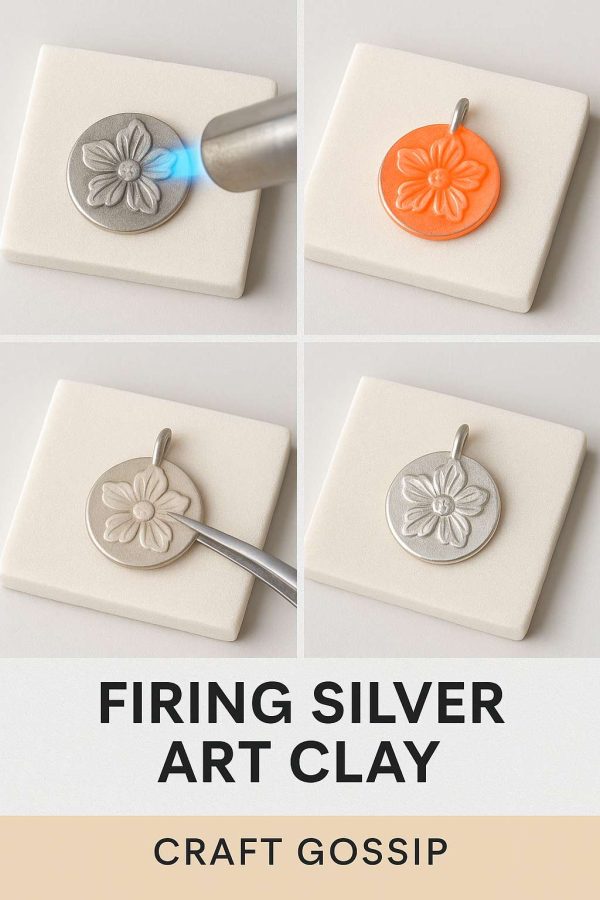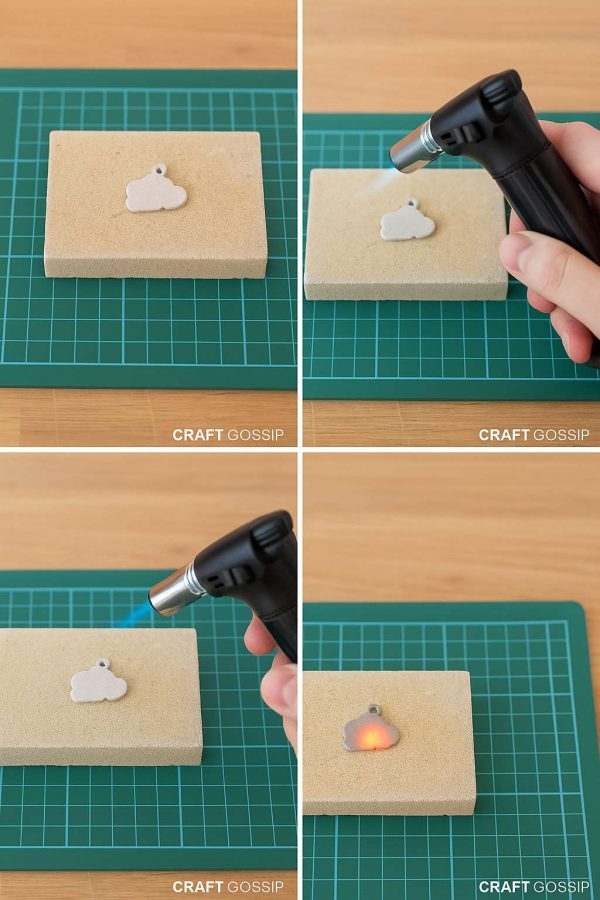
Here’s another good tutorial from KalinkaPolinka. It’s in Russian but you can see Google’s idea of a translation here. The pictures are so excellent you may not need the written directions anyways.
At the beginning the author mentions the Chinese brand of clay she is using is very soft and that she leaches it before using it or she mixes with other clays for a better consistency. She also talks about embedding findings into clay to create unique pendants or brooches and mentions using both a mechanical hold (embedding findings into the clay securely) and strong glue after baking.
The finished flower is excellent! And if you can’t find artificial stamens to use, use clay and very thin wire to make your own.


